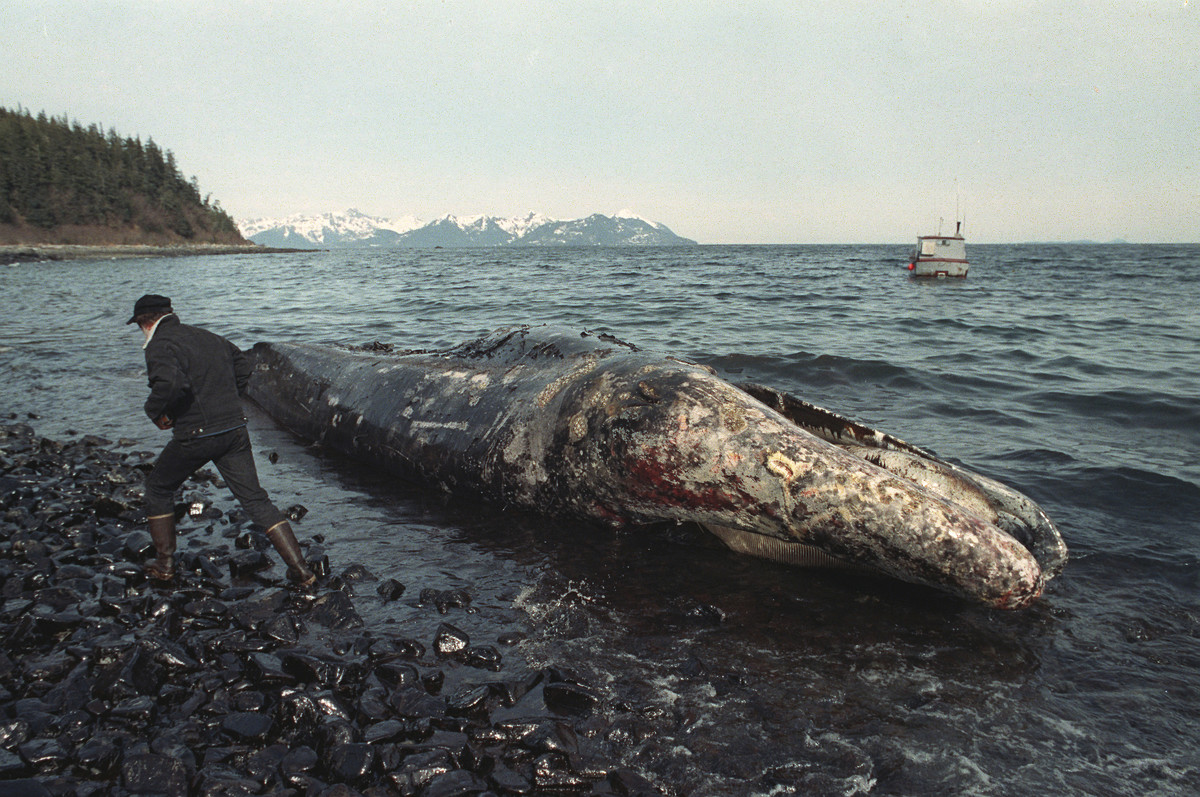
In this photo taken April 9, 1989, a local fisherman inspects a dead California gray whale on the northern shore of Latouche Island, Alaska. The whale was found in the oil-contaminated waters of Prince William Sound. (AP Photo/John Gaps III, File)
ANCHORAGE, Alaska (AP) - It was just after midnight on March 24, 1989, when an Exxon Shipping Co. tanker ran aground outside the town of Valdez, Alaska, spewing millions of gallons of thick, toxic crude oil into the pristine Prince William Sound.
The world watched the aftermath unfold: scores of herring, sea otters and birds soaked in oil, and hundreds of miles of shoreline polluted. Commercial fishermen in the area saw their careers hit bottom.
It's been 30 years since the disaster, at the time the largest oil spill in U.S. history. Only the 2010 Deep Water Horizon disaster in the Gulf of Mexico has eclipsed it.
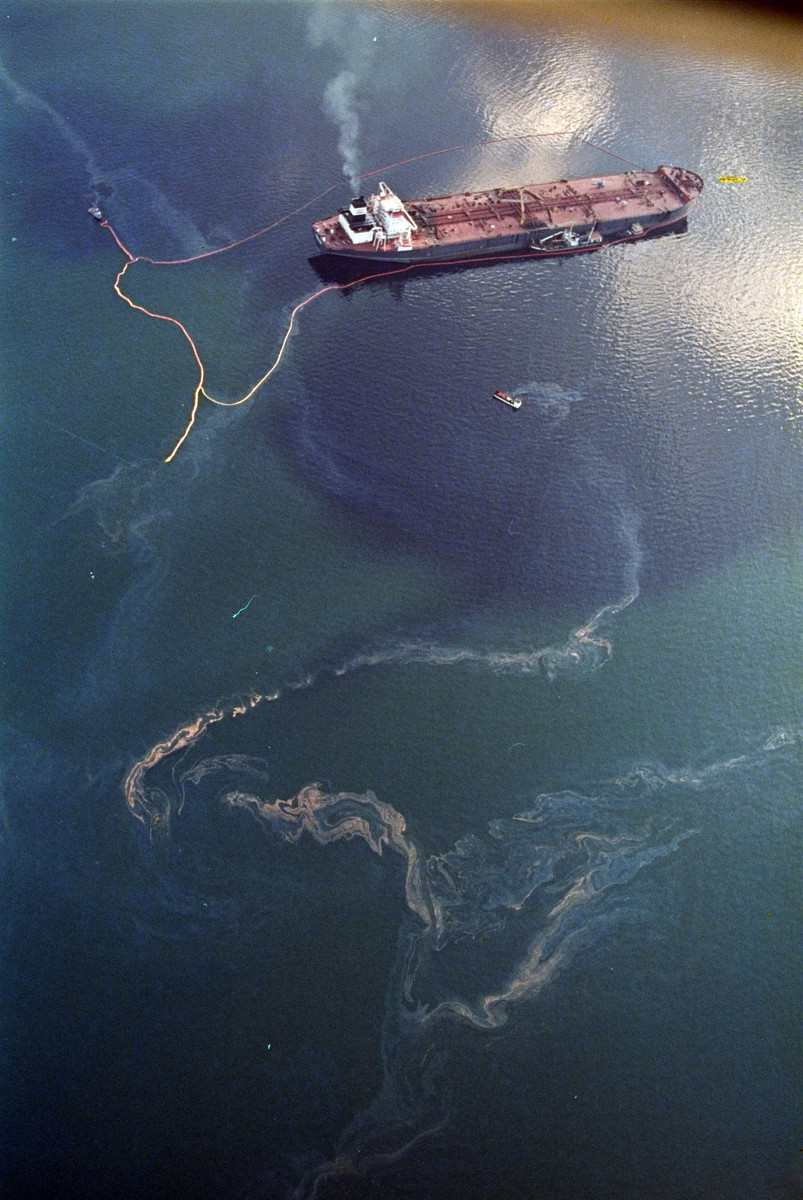
In this April 9, 1989, file photo, crude oil from the tanker Exxon Valdez, top, swirls on the surface of Alaska's Prince William Sound near Naked Island, days after the tanker ran aground, spilling millions of gallons of oil and causing widespread environmental damage. (AP Photo/John Gaps III, File)
The 986-foot (300-meter) Exxon Valdez tanker was bound for California when it struck Alaska's Bligh Reef at 12:04 a.m. It spilled 11 million gallons (42 million liters) of crude oil, which storms and currents smeared across 1,300 miles (2,092 million kilometers) of shoreline.
The oil also extensively fouled spawning habitat in Prince William Sound for herring and pink salmon, two of its most important commercial fish species.
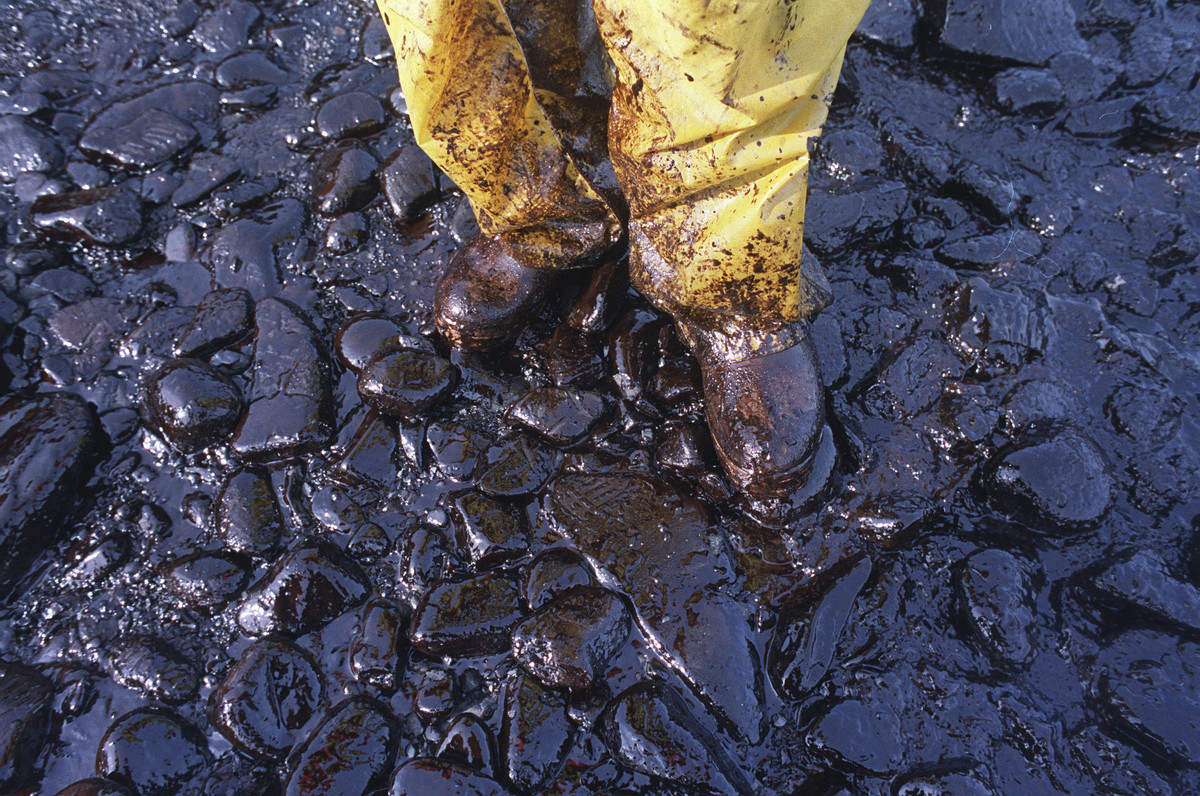
In this April 11, 1989, file photo, thick crude oil that washed up on the cobble beach of Evans Island sticks to the boots and pants of a local fisherman in Prince William Sound, Alaska. The Exxon Valdez tanker oil spill on March 24 blackened hundreds of miles of coastline. (AP Photo/John Gaps III, File)
Fishermen and others affected by the spill dealt with ruined livelihoods, broken marriages and suicides. Exxon compensation checks, minus what fishermen earned on spill work, arrived too late for many.
Most of the affected species have recovered, but the spill led to wide-scale changes in the oil industry. Today, North Slope oil must be transported in double-hull tankers, which must be escorted by two tugs. Radar monitors the vessel's position as well as that of icebergs.
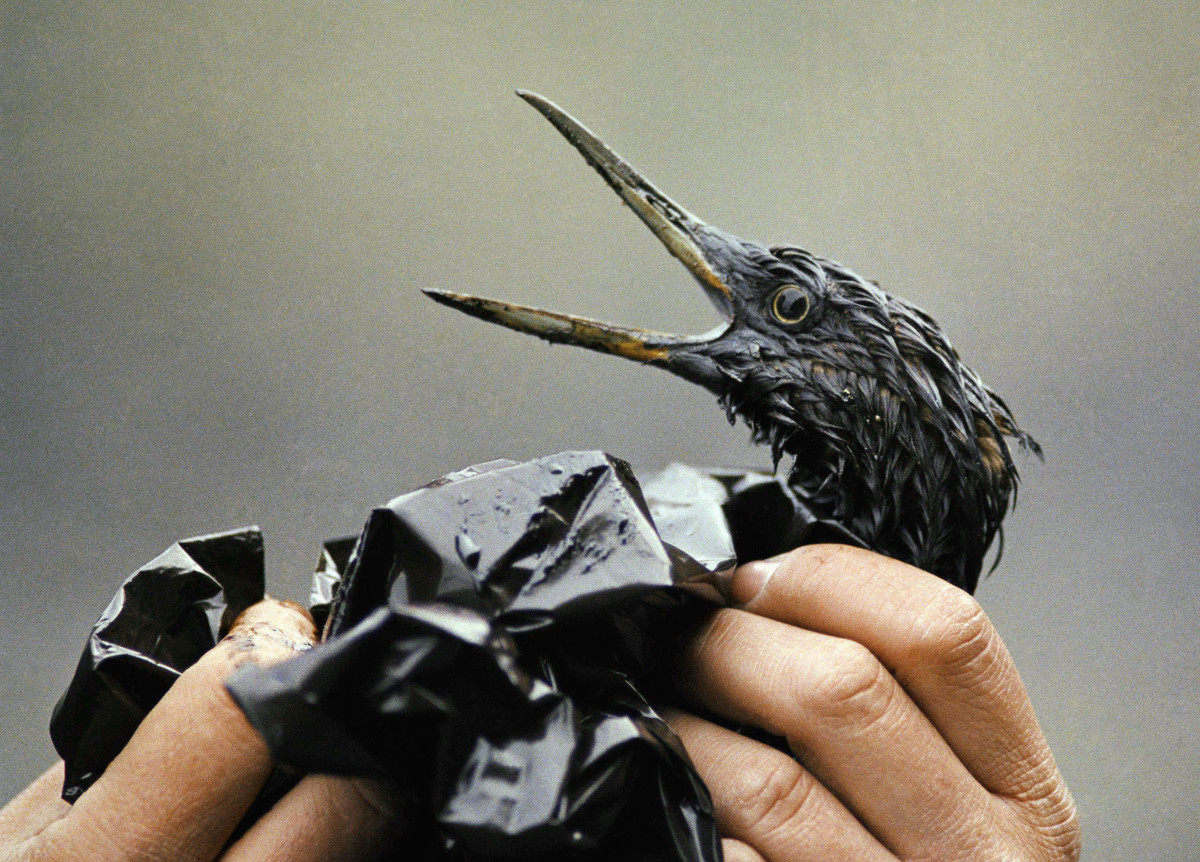
In this April 1989, file photo, an oil covered bird is examined on an island in Prince William Sound, Alaska. The Exxon Valdez oil spill 30 years ago produced striking images of sea otters and birds soaked in oil and workers painstakingly washing crude off beaches. (AP Photo/Jack Smith, File)
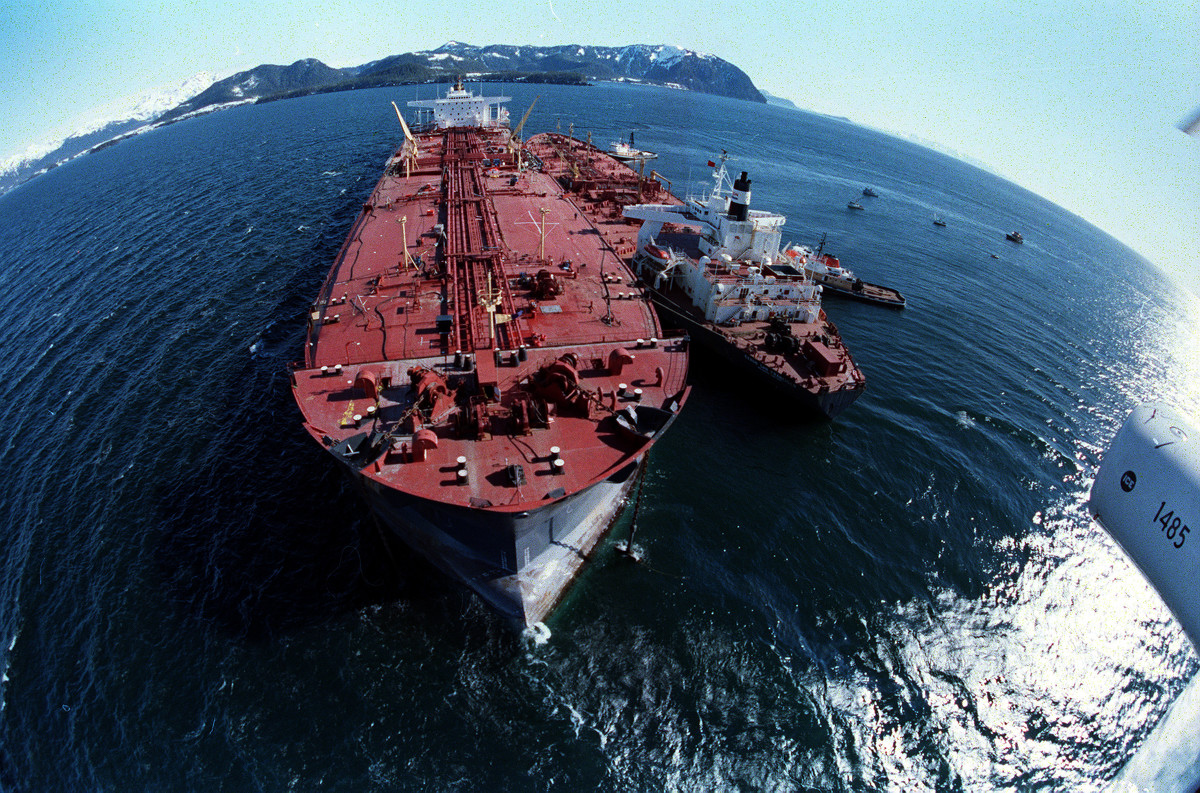
In this April 4, 1989, file photo, the grounded tanker Exxon Valdez, left, unloads oil onto a smaller tanker, San Francisco, as efforts to refloat the ship continue on Prince William Sound. The Exxon Valdez tanker struck Alaska's Bligh Reef on March 24, 1989, while bound for California. It spilled about 11 million gallons of crude oil, which storms and currents smeared across about 1,300 miles of shoreline. (AP Photo/Rob Stapleton, File)
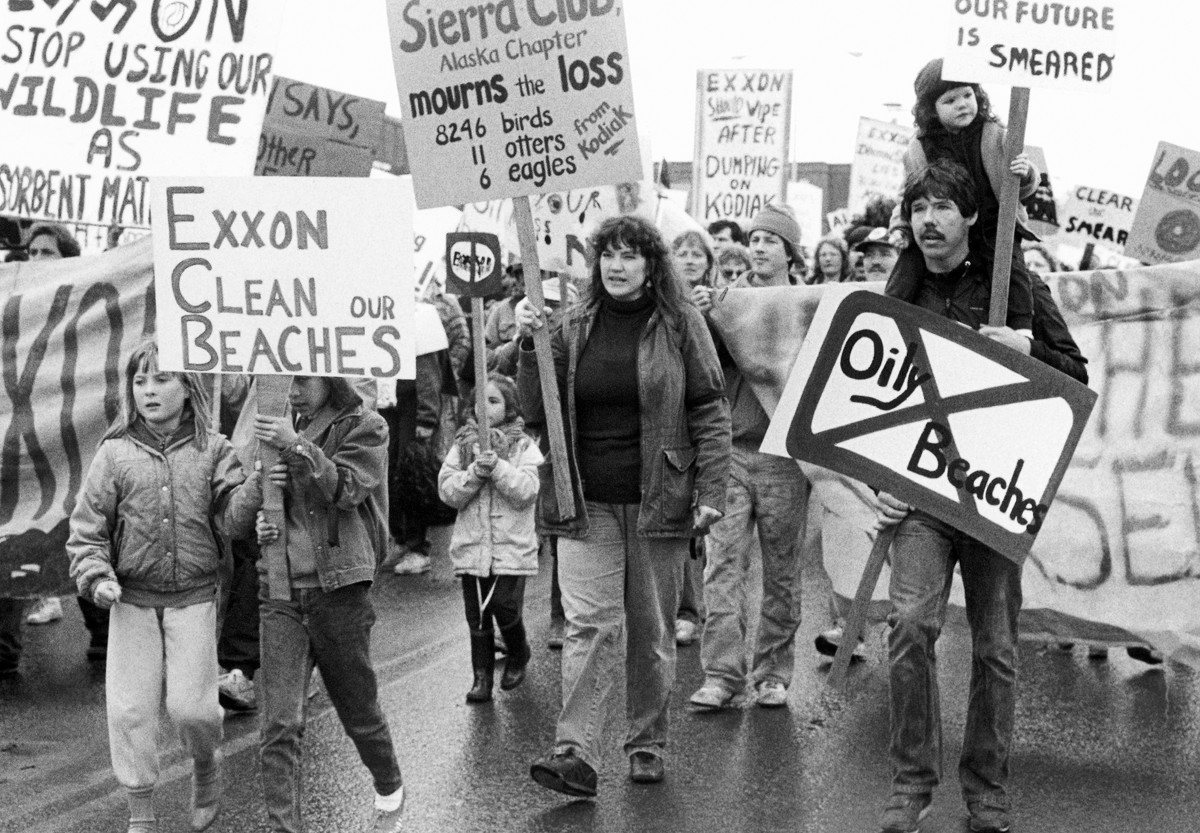
In this May 27, 1989, file photo, people carry signs to protest the Exxon oil spill in Anchorage, Alaska. It's been 30 years since the disaster, at the time the largest oil spill in U.S. history. (AP Photo/Marion Stirrup, File)
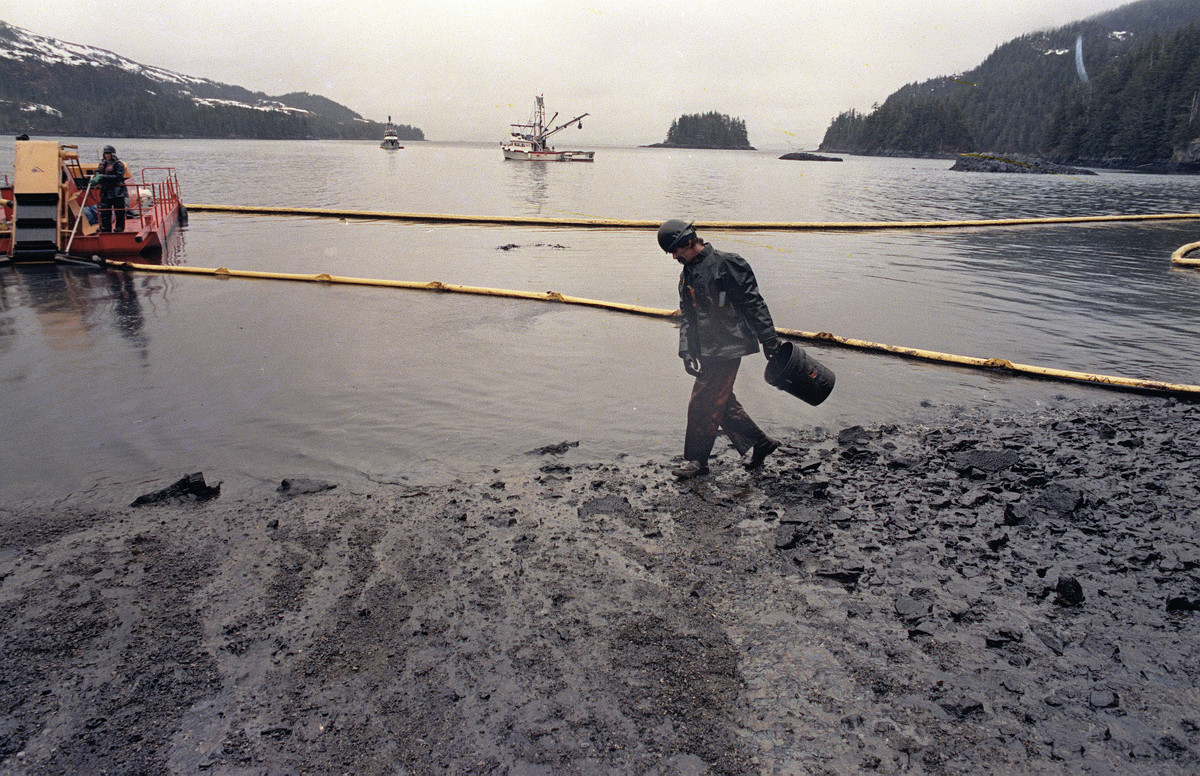
In this April 17, 1989, file photo, a worker makes his way across the polluted shore of Block Island, Alaska, as efforts are underway to test techniques to clean up the oil spill of the tanker Exxon Valdez in Prince William Sound. The Exxon Valdez tanker struck Alaska's Bligh Reef on March 24, 1989, while bound for California. It spilled about 11 million gallons of crude oil, which storms and currents smeared across about 1,300 miles of shoreline. (AP Photo/John Gaps III, File)
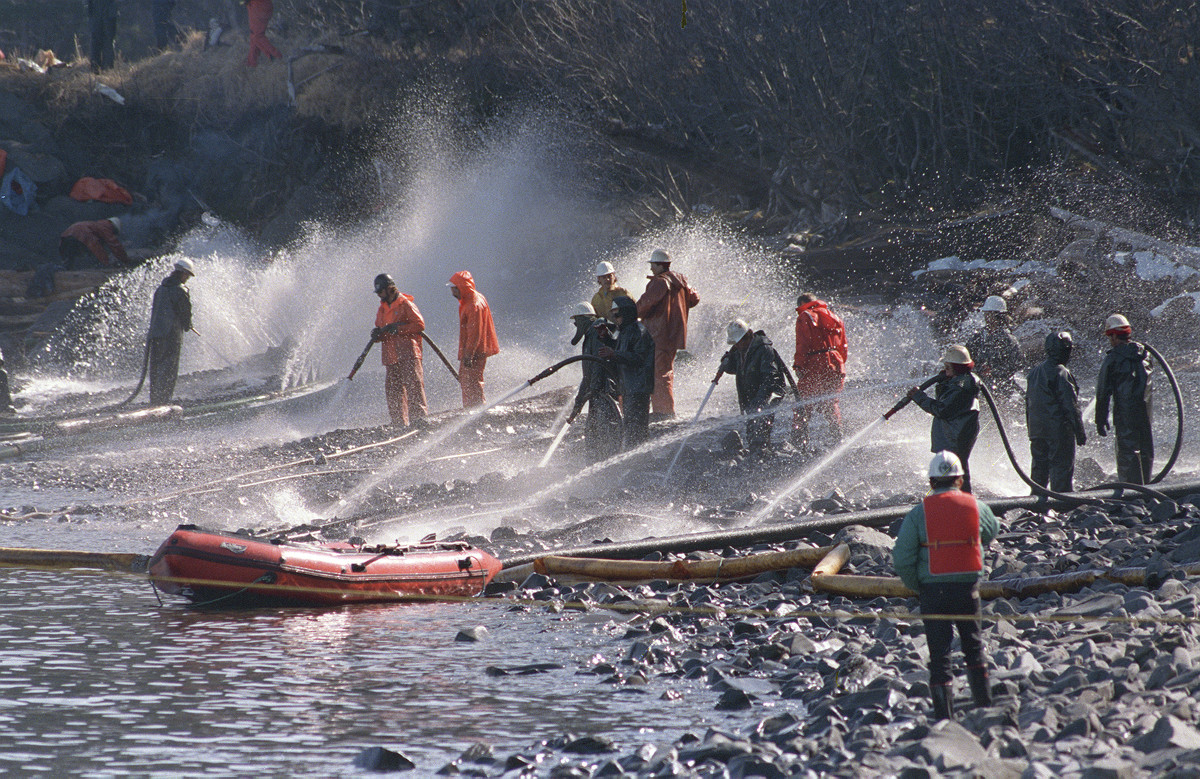
In this April 21, 1989, file photo, crews use high pressured hoses to blast the rocks on this beachfront on Naked Island, Alaska. Just after midnight on March 24, 1989, an Exxon Shipping Co. tanker ran aground outside the town of Valdez, Alaska, spewing millions of gallons of thick, toxic crude oil into the pristine Prince William Sound. (AP Photo/Rob Stapleton, File)
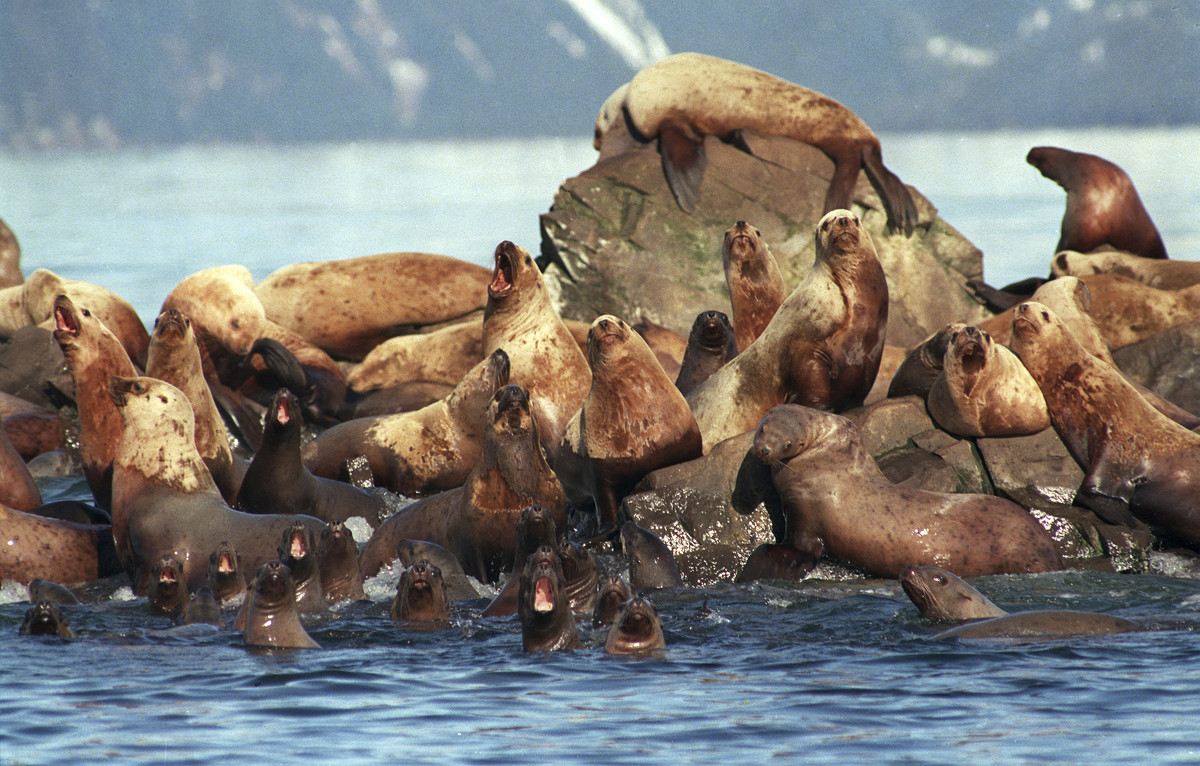
In this April 2, 1989, file photo, sea lions get oil on them as they swim in the water and sit on the rock at Prince William Sound, Alaska. The Exxon Valdez oil spill 30 years ago produced striking images of sea otters and birds soaked in oil and workers painstakingly washing crude off beaches. (AP Photo/Jack Smith, File)
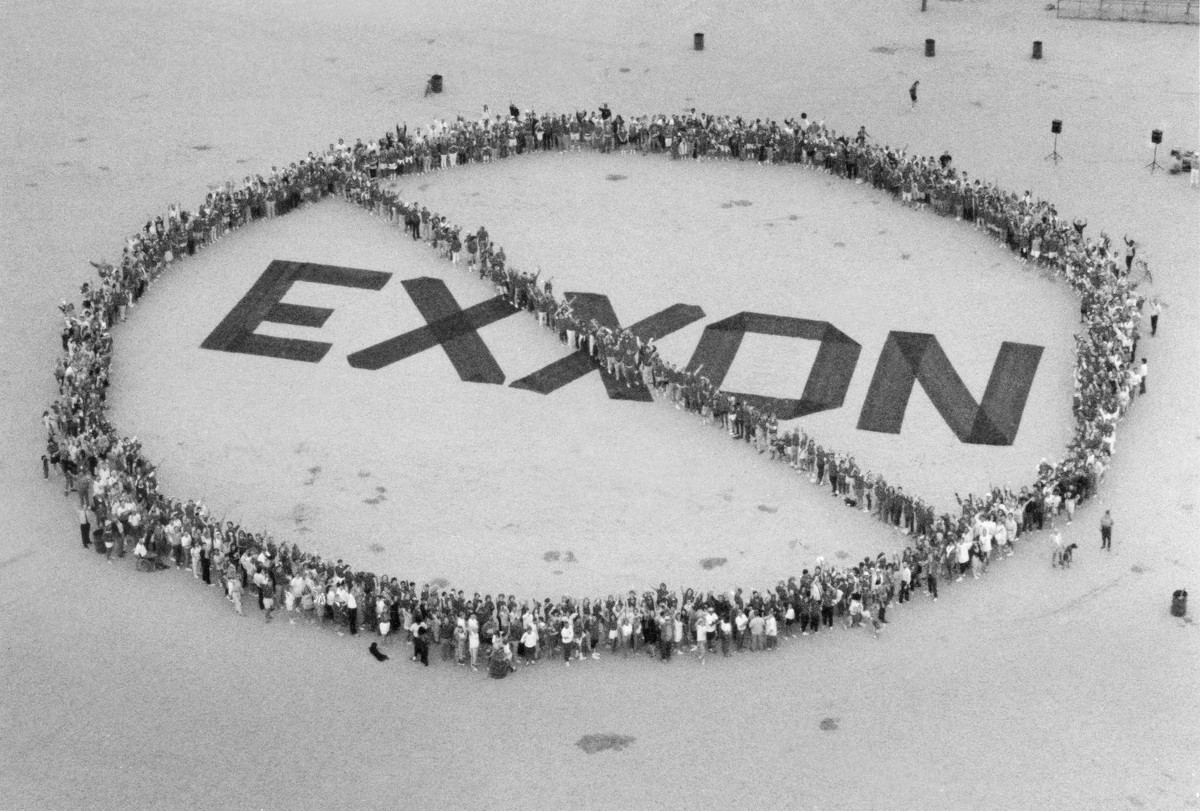
In this July 17, 1989, file photo, around 200 people showed up at Fiesta Island in San Diego, to protest the use of Exxon products. The Exxon Valdez tanker struck Alaska's Bligh Reef on March 24, 1989, while bound for California. It spilled about 11 million gallons of crude oil, which storms and currents smeared across about 1,300 miles of shoreline. (AP Photo/Brent Clingman, File)